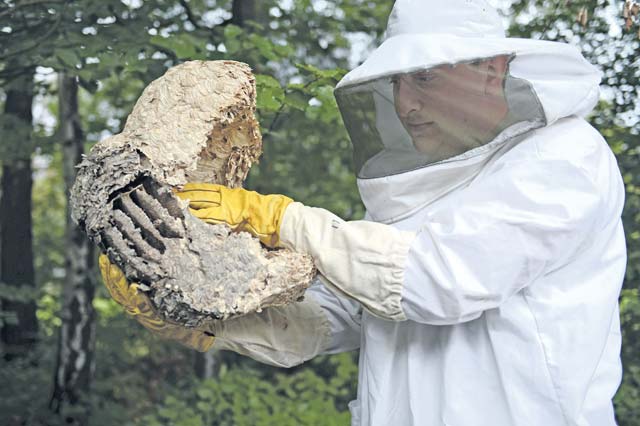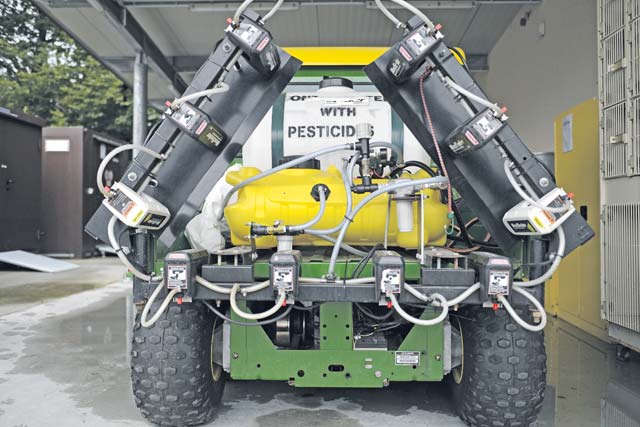
Senior Airman Jonathan Roland, 786th Civil Engineer Squadron pest management journeyman, handles a wasp’s nest July 29 on Ramstein. Pest management conducts base-wide inspections, preventative maintenance and gets rid of unwanted pests on the installation.
“While Airmen and civilians try to complete their daily mission that might get interrupted by insects, roaches, rats and bats, it’s our job to prevent them from stopping or slowing down the mission.” said 786th Civil Engineer Squadron pest management journeyman, Senior Airman Jonathan Roland.
During the colder months, pest management completes 20 to 30 work orders and during the warmer months, they complete 70 to 85. A work order could consist of eradicating a wasp’s nest from the darkest corner of a basement or trying to catch a wild animal scampering around the base.
“One time I had to chase a fox on a playground at the [child development center],” said Airman 1st Class Gollie Felder, 786th CES pest management journeyman. “There was a crowd of kids and adults and it seemed like we were putting on a show for the kids. My co-worker kept falling while we were chasing it, and it was embarrassing but funny at the same time. It was pretty entertaining.”
The pest management team said they could come across anything when completing a job.
“What I love about this job is there’s something new every day,” said Roland. “Here, anything could happen. An aircraft could come in from downrange and have rats, snakes or some kind of crazy, insect problem.”
The team ventures out to public restaurants and educational facilities to do preventative maintenance. They inspect a total of 62 food handling facilities and complete base-wide random inspections on a monthly basis to ensure roaches, mice and rats aren’t lingering in the Ramstein facilities.

The weed seeker is a machine with a few sensors that detects the exact location of weeds while driving over an area. The 786th Civil Engineer Squadron herbicides 2,400,000 square yards on the flightline, protecting 28 aircraft worth about $21 billion.
Pests might be small in size but can ultimately cause bigger problems for the base or any facility they’re occupying. For the pest management career field, Ramstein has the largest shop in U.S. Air Forces in Europe and Air Forces Africa with a staff of two civilians and seven Airmen to serve more than 55,000 people in the Kaiserslautern Military Community. The pest management office caters to the Air Force’s second largest family housing program with nearly 2,000 on-base family housing units, 16 dormitories and 1,486 dorm rooms.
Despite having a large area of responsibility to maintain, the 786th CES continues to do their part in keeping Ramstein pest free.


